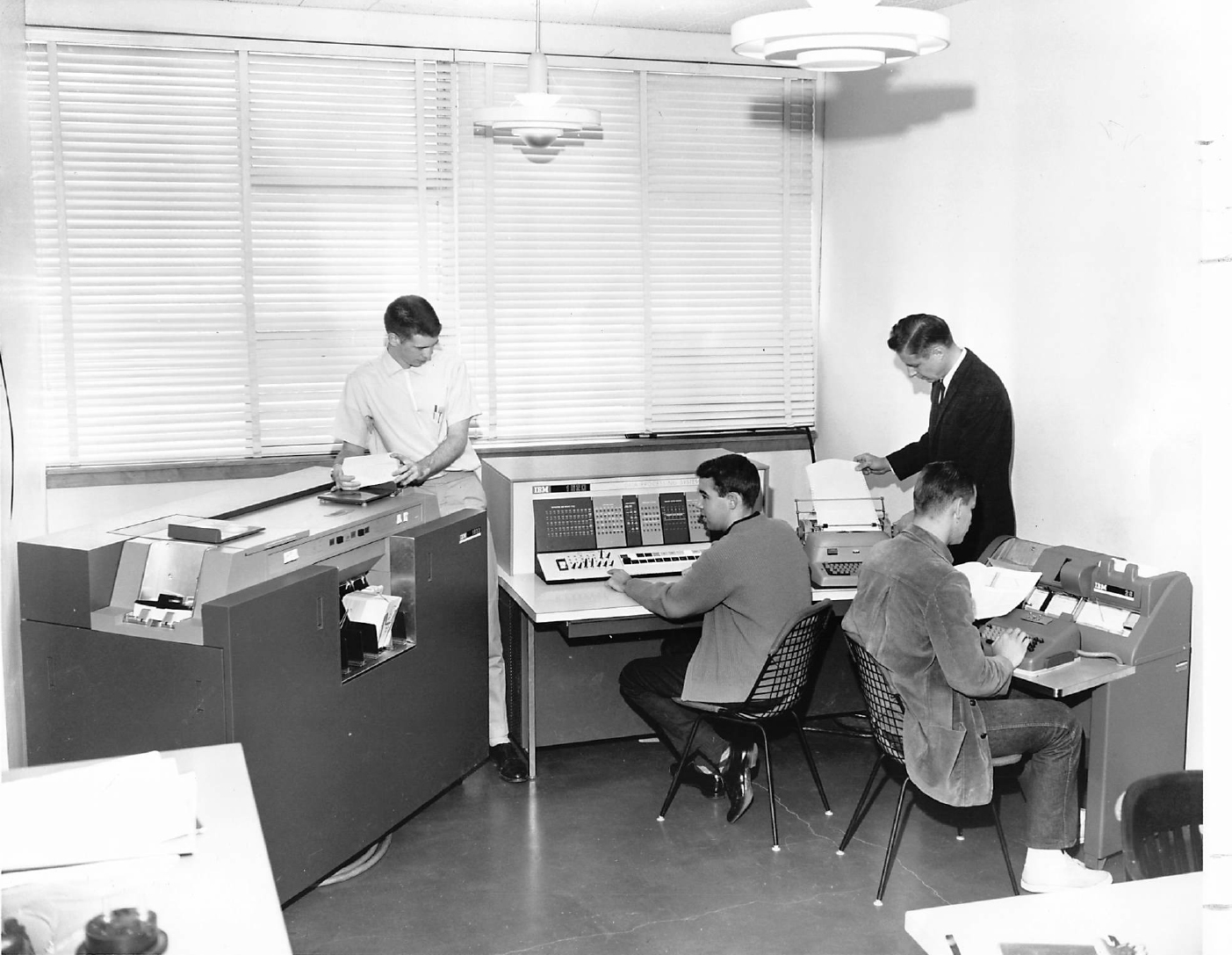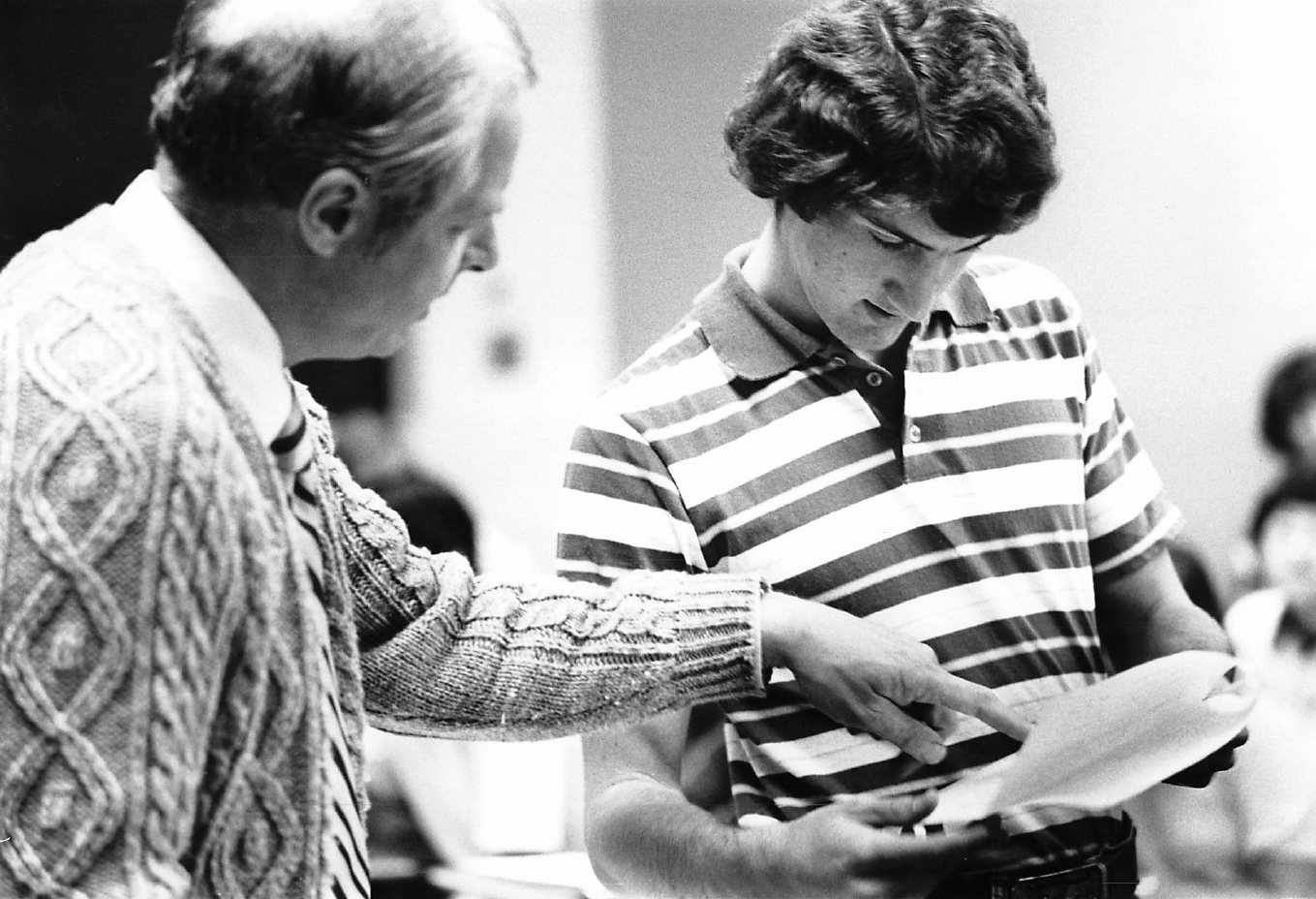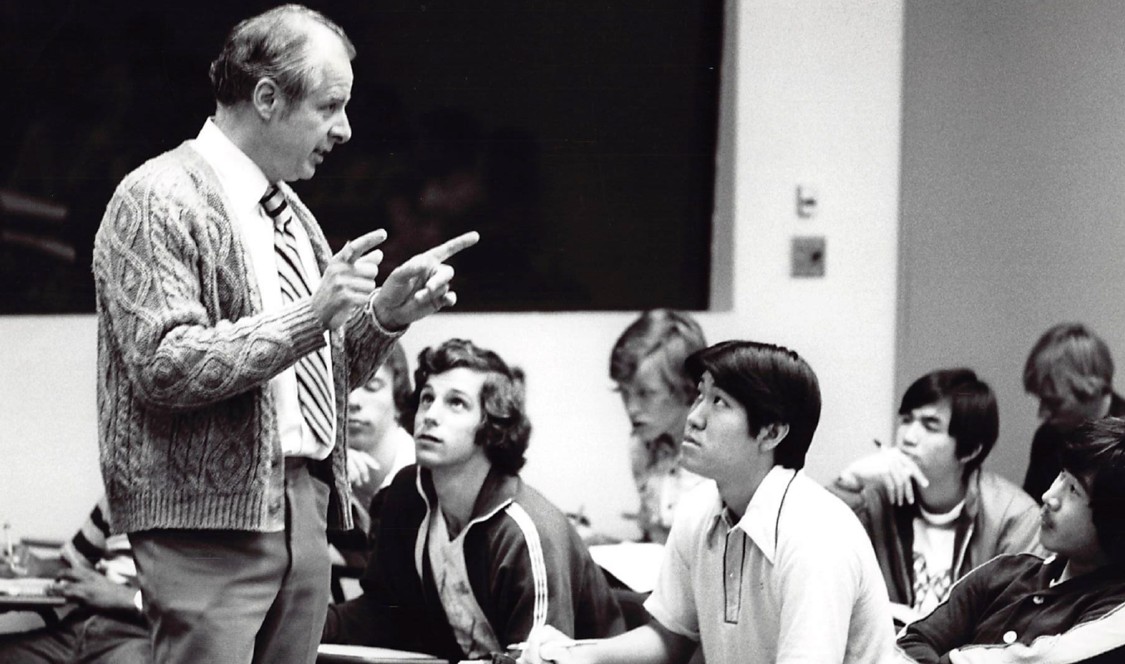John Ferling, Claremont McKenna College’s first full-time mathematics professor, who established the College’s computer lab, died on May 31. He was 93 years old.
Professor Ferling taught at CMC for 44 years from 1957 to 2001, becoming the first faculty member to teach operations research at The Claremont Colleges. Named the Dengler-Dykema Professor of Mathematics, Ferling taught calculus and applied analysis and oversaw CMC’s IBM 1620 computer system.
Born in Koenigsberg, Germany (now Kaliningrad, Russia), Ferling attended high school in West Germany. At age 21, he emigrated to the United States, receiving his B.S. from Upsala College in East Orange, NJ in three semesters. He earned his Ph.D. in mathematics from the University of Southern California, concentrating on abstract math, nonlinear integral equations, and fluid dynamics. His coursework at USC centered on electrical engineering with an emphasis on digital computers. This provided a framework for the emerging field of computer science that he introduced at CMC.
As his understanding of computer science grew and the field emerged as an academic discipline, Ferling introduced digital computers at CMC. In 1962, under George Benson’s presidency, Ferling taught several computer courses and eventually established CMC’s computer lab. His research interest was on error propagation in test and measurement systems and uncertainty analysis. He also developed conference sessions on national and international uncertainty analysis.
Ferling recalled in a 2001 CMC Magazine story the discussion that swirled around purchasing the College’s first computer.

“In 1962 I told President Benson that CMC should get a computer,” Ferling said. “He called a meeting of about 10 senior people… and the consensus was that there was no point for CMC to have a computer. After the meeting, President Benson asked me: ‘John, what do you think?’ My answer was we should get one. President Benson then said, ‘Order one.’ So, CMC got an IBM 1620 computer, one of the first transistorized computers… Its use gave us much insight. Also, it took several men, ropes, and pulleys to get it up the stairs in Adams Hall.”
A leader in the computer science field, Ferling received numerous job offers from IBM, the US Navy, and the UC system. He chose to stay at CMC up until his retirement in 2001.
Ferling is remembered among his colleagues as a respected scholar, mentor, and engaging member of the faculty.
Jack Stark ’57 GP’11, CMC president from 1971 to 1999, said Ferling was proud of starting and completing his career at a growing and dynamic institution.
"John Ferling was not just a longtime noted colleague, he and his wife, Hannelore, were treasured friends,” said Stark. “When I joined the staff of CMC in 1961, John was an already a well-known young faculty member. When I became chief financial officer a few years later, John taught me how to use the computer, and helped me make the long-term financial projections that are so necessary for a well-run institution. John had a terrific influence on the past, present, and future of Claremont McKenna College."
Stark recalled, that when the youngest of Ferling’s three daughters was born, he delivered a pink computer punch card to announce her arrival. “In those days, faculty had students over to the home all the time, and the whole family was there to cook and serve meals. His children were often at sports events and special days on the CMC campus,” Stark recalled.
At CMC, Ferling was the chair of the Admission and Financial Aid Committee, and was an avid skier and sponsor of the Ski Club of The Claremont Colleges.
“John was the chairman of the department when I was hired 34 years ago,” said Robert J. Valenza, the current Dengler-Dykema Chair of Mathematics and the Humanities. “He advised me and supported me in my early years at CMC, and I will be forever grateful to him. He was one of the finest persons I have ever known.”

Added Asuman Güven Aksoy P’07, the Crown Professor of Mathematics and Roberts Fellow: “For many years he helped the admission office as a faculty member. I often saw him reading piles of folders containing applications in his office. This was not his ‘committee assignment.’ He understood the importance of a strong student body and volunteered to help.”
Ferling was also active outside of CMC. He was chairman of the Southern California section of the Mathematical Association of America and chapter Chairman of the Association of Computing Machinery. He was the principal designer and author of the US Navy Precision Direct Voltage Program in 1976, and was a member of the Calibration Interval Committee of the National Conference of Standards Laboratories. He also served the Board of Directors of the Chadwick School and on several Claremont Unified School District committees.
His colleagues not only remembered him as a talented intellect, but a generous friend.
“At some point I had a German visitor at CMC, and John volunteered to show him around, host him for dinner at his house, and generally made him feel very welcome in Claremont—this was highly appreciated. He was a genuine and kind man. He will be missed,” said Associate Professor of Mathematics Lenny Fukshansky.
T.J. Glauthier ’65 maintained contact with his professor and organized lunches at their home with fellow alumni. “Dr. Ferling was the most influential professor I ever had,” Glauthier said. “He was rightly proud of moving CMC into the computer era with our first computer, the IBM 1620, which arrived at the start of my sophomore year in 1962. I had the good fortune to work as the computer lab director for him then. Through his classes and the computer, he inspired me to focus on analytical ways to solve real-world problems, which was invaluable throughout my career, including at the White House.”

